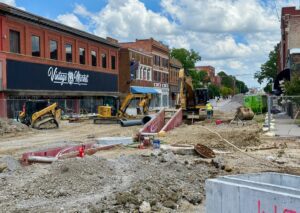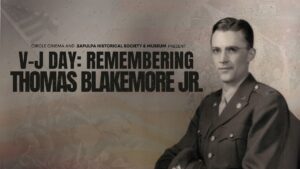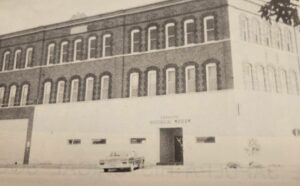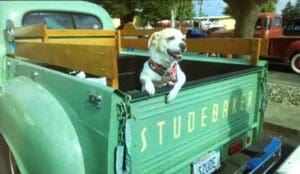Rachel Whitney, Curator, Sapulpa Historical Museum
Robert Ripley founded a very unique franchise. Since 1918, Ripley’s Believe It or Not! collection has entertained audiences around the world. The Believe It or Not! is a series that began in the newspaper sharing “bizarre events and items so strange and unusual that readers might question the claims.” Ripley, a cartoonist, originally had a column titled Champs and Chumps, but changed it to the name we all recall today, Believe It or Not!
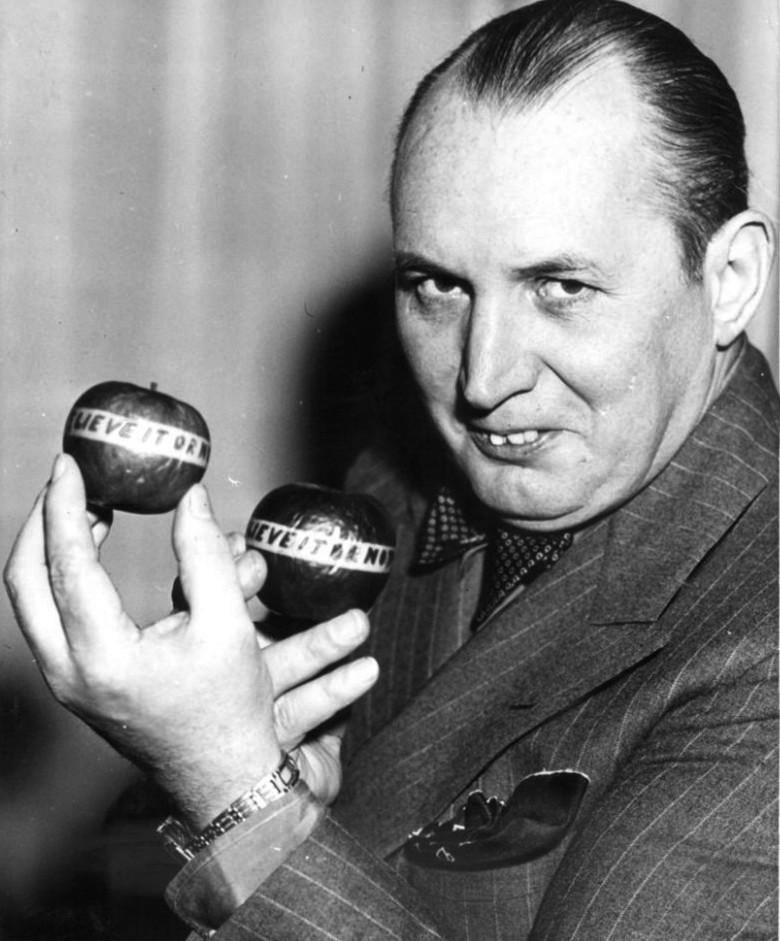

Many people have read the stories, watched the shows, visited the museums, and heard the tales for more than 100 years. “The Ripley collection includes 20,000 photographs, 30,000 artifacts and more than 100,000 cartoon panels.”
Believe it or not, at least two tales from Sapulpa have made it into the bizarre series of Ripley’s Believe It or Not!
This week in Sapulpa history, in 1937, a local attorney received a letter from the Robert L. Ripley, about someone with a unique talent. “Don Lewis recently received a letter asking for pictures of his son, Don, Jr.,.” A story about Don Jr. reached the ears of Ripley.
Don Jr. was born August 25, 1935. At the remarkable young age of eighteen months, Don Jr. was on his roller skates. Ripley asked for an image of the young child on his skates.

Ripley began working on a cartoon, or sketch, for the incredible feat that a one-and-a-half-year-old could do. The panel would feature not only the cartoon likeness of Don Jr. on skates, but also feature his parents, Don Sr. and Alma Lewis.

Just eight years later, another Sapulpan would also receive a letter from Robert Ripley, but this time, about someone who discovered something bizarre.
“The word mummy conjures images of the glorious sarcophagi of ancient Egypt…The United States has had a few instances of spontaneously mummified people, like the Spirit Cave Mummy found in Nevada in the 1940s. In the late 1800s and 1900s, there was a spate of intentionally created mummies. With slow communication, unclaimed people were taken to the undertaker, where the deceased would be cleaned, embalmed, photographed, and kept until relatives were found.
“Undertakers at the time used an arsenic-based embalming fluid that extended preservation. The family members would pay for the funeral expenses and bury their loved ones. If the body remained unclaimed, they would be interred in the local paupers’ cemetery.
“A few had a different fate.”
Many men and families traveled west in hopes of looking for work, opportunity, and growth. One such man came to Oklahoma either for work or simply hitching a ride. He came to Sapulpa in 1916. Little did he know he would make national news – 30 years later.
Harold Rampp purchased Buffington Funeral Home in March 1946, and renamed it as Rampp Funeral Home. His first services were on April 11, 1946. After undergoing and completing remodeling, including purchasing a brand new 1946 hearse, Rampp made a discovery.
“While cleaning, he found a mummified man in a rough pine box.
“Rampp immediately went to the Creek County attorney. The attorney found that the former owner, Bert Buffington, had received the body from the city in 1916. When no family was found, Bert said he had gotten permission to use the body to teach others how to embalm.”
The headlines read “Sapulpa’s Forgotten Man.”
The story made national news. “Townspeople gossiped about the man. Some said the Forgotten Man was shot and killed trespassing, others said he was killed in a robbery, and many said he died of pneumonia.” A worker on the Frisco railroad even claimed he saw the mummified body back in 1906, ten years before the believed death year, and he heard the man died from pneumonia.

When word spread around, Ripley reached out to Rampp, “asking if there were photographs of the mummy so they could illustrate the story.”
“The Progressive Era saw the rise of American Dime Museums and traveling carnivals, which showcased living people with physical differences in the ‘freak show,’ and odditoriums that displayed wax and plastic figures with various conditions. This fueled a market for the American mummy.”

There are no known images of the deceased, nor did the newspapers in 1946 describe the condition and likeness of the man.
In 1916, according to the Buffington Funeral Home records, there were two male unidentified bodies taken to the Funeral Home. Both deaths occurred in October 1916.
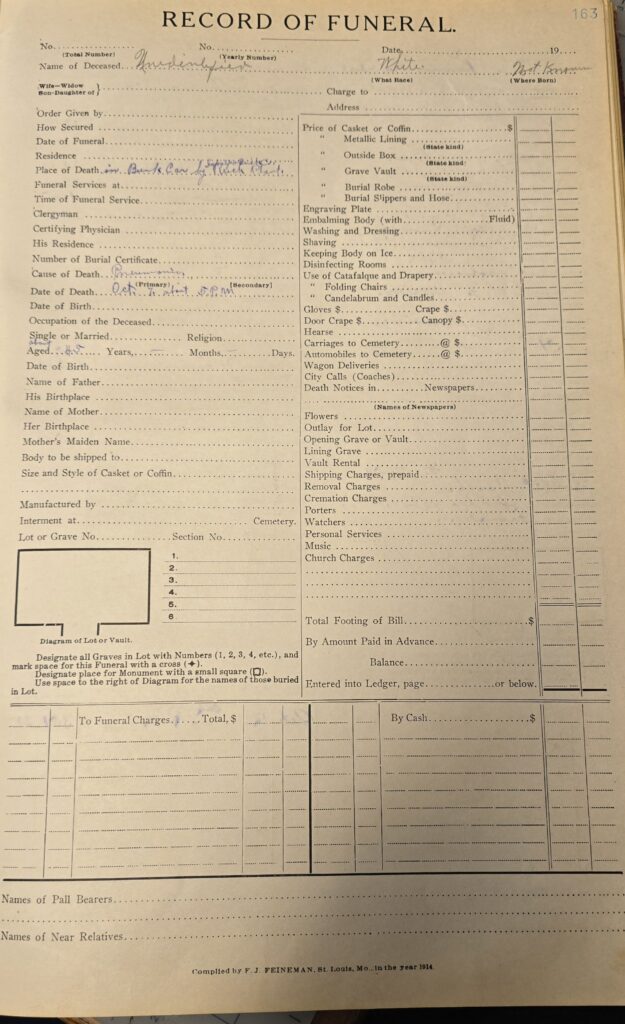
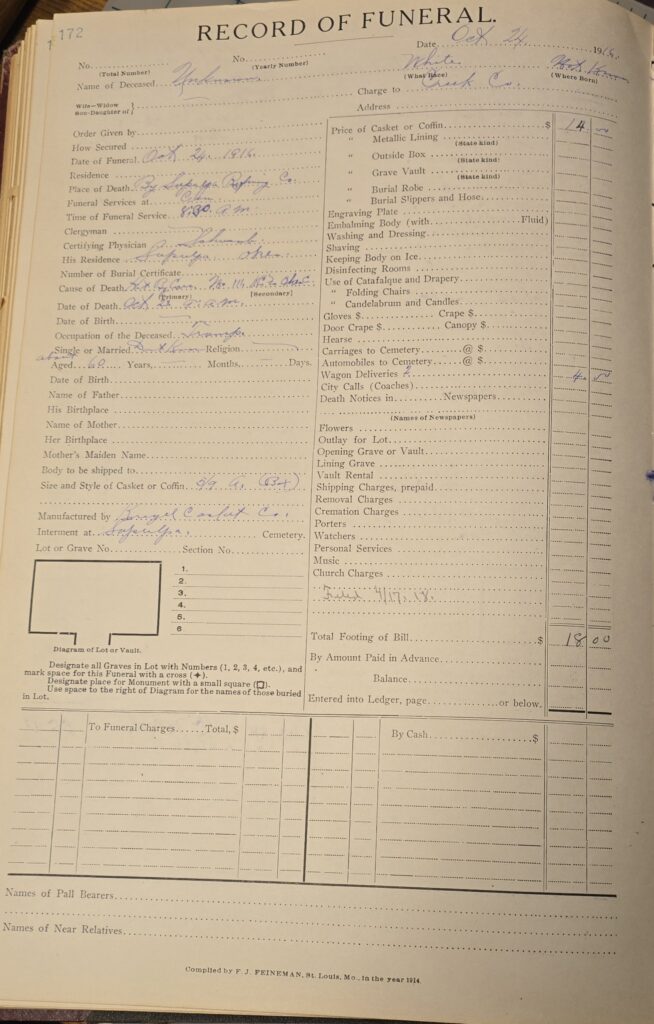
One man was described as “aged: about 60,” and he had died in the early morning at “place of death: by Sapulpa Refinery Co.” just north of town. His occupation was described as “tramp,” meaning homeless or a traveler. His “cause of death: hit by cars no. 111, KC to Okla C,” meaning he was hit by a train that was on route from Kansas City to Oklahoma City. It also stated that his funeral service was at the cemetery.
The Record of Funeral for the second unidentified gentleman had even less description on the deceased. He was “aged: about 45,” and his “cause of death: pneumonia,” as he died possibly in his sleep. The “place of death: in a Buick car by Sapulpa Brick Plant.” And according to the newspapers, “the Sapulpa Herald from October 9, 1916, stated that an unknown man had perished near the Sapulpa Brick and Tile Company two days prior. He had come down with a group of men and fallen ill. The described him as a man in his forties, with reddish-gray hair, a mustache, a broken nose, and a nudie girl tattoo on his right arm.”
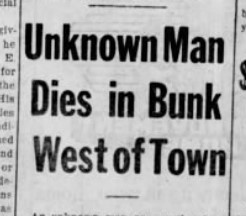
Although the newspapers never stated which of the two gentlemen described above was the one found 30 years after his death, Rampp upon the discovery moved forward with a proper burial.

“After a proper death certificate was signed, Rampp had a small service for the man and had him buried at South Heights Cemetery in Sapulpa.” The South Heights Cemetery record states that the deceased had died of pneumonia, but has under the listing of age as “about 76.”

Finally at rest, this week in Sapulpa history, “the story was out of the news by the end of July 1946. Sapulpa’s Forgotten Man rests patiently, waiting for his name to be returned.”
At the museum, we have not been able to locate a copy of the Don Jr. nor the Rampp Funeral Home cartoon, illustration, or story from Ripley’s Believe It or Not! from the newspapers or collection – if they exist, at all.
To hear more about the “American Mummy,” check out this website to purchase the stories of “tales of five men who died in Oklahoma or Texas stuck in the world of the living for decades after their deaths.”
(Sapulpa Herald, October 9, 1916, July 28, 1937, August 20, 1937; Sayria Daily, May 3, 1946; Bristow Record, May 28, 1946, June 4, 1946, June 11, 1946)



